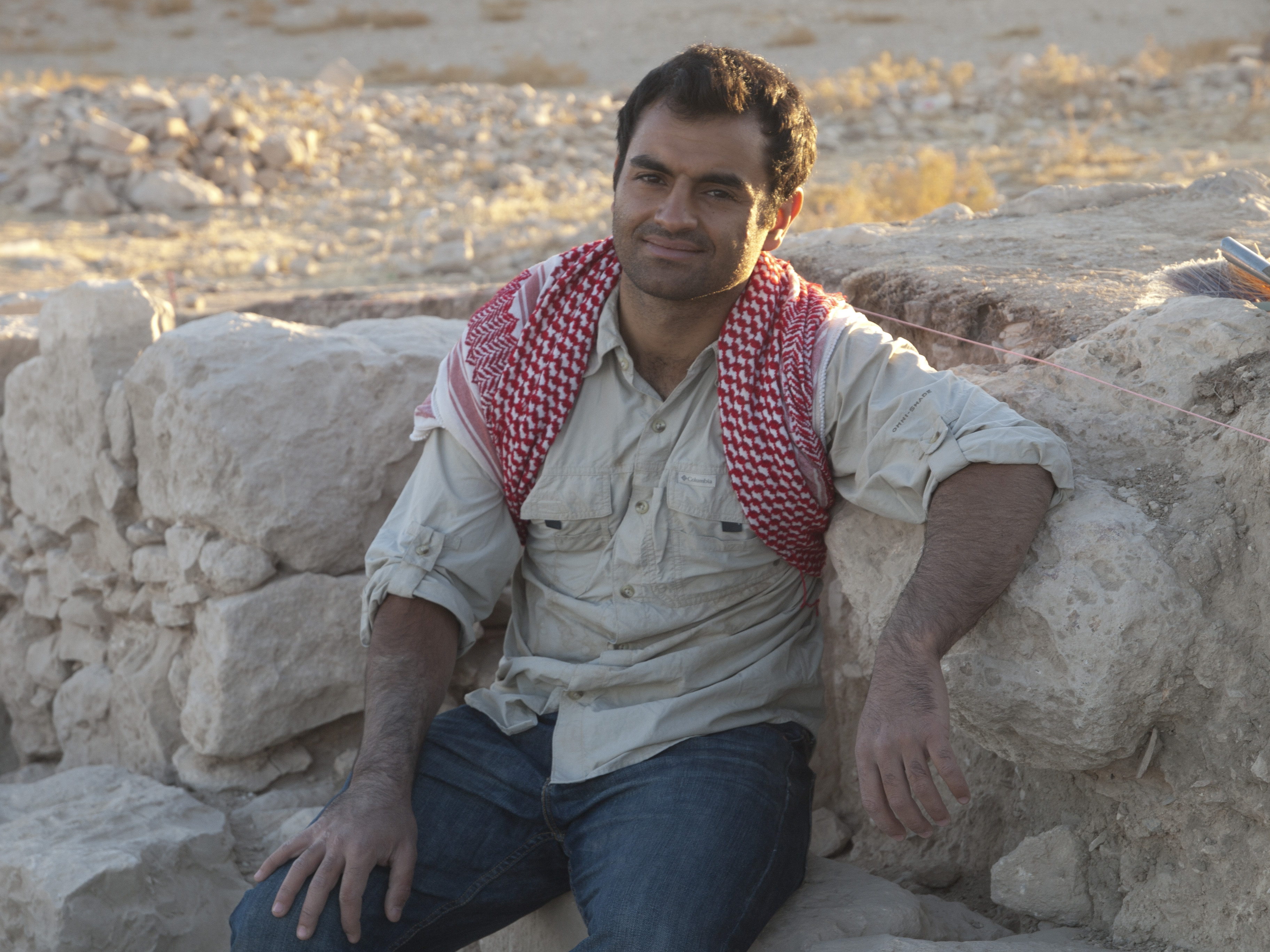
SAA PRESENTS 2015 DISSERTATION AWARD TO DR. ALAN FARAHANI

Dr. Alan Farahani has won the 2015 Society for American Archaeology Dissertation Award for his 2014 dissertation, “Sustaining Community under Empire: An Archaeological Investigation of Long-Term Agricultural Production and Imperial Interventions at Dhiban, Jordan, 1000 BCE – 1450 CE.” An abstract of Farahani’s dissertation is below this message.
Alan received his PhD from the University of California, Berkeley’s Ancient History and Mediterranean Archaeology Program and is currently a post-doctoral scholar at the Cotsen Institute of Archaeology at the University of California, Los Angles. Berkeley faculty members Benjamin Porter (Near Eastern Studies), Carlos Norena (History), and Christine Hastorf (Anthropology) supervised the dissertation. Alan’s e-mail address is alanfarahani@ucla.edu.
The Society for American Archaeology grants one award annually to a recent graduate whose dissertation the committee considers to be an original, well written, and outstanding piece of scholarship. The award is widely considered to be one of the highest honors a dissertation can win in the discipline of archaeology. A list of past recipients and their degree-granting institutions can be found here.
Alan will be presented the award during a Friday, April 17 awards ceremony at the SAA annual meeting in San Francisco.
“Sustaining Community under Empire: An Archaeological Investigation of Long-Term Agricultural Production and Imperial Interventions at Dhiban, Jordan, 1000 BCE – 1450 CE.”
Alan S Farahani
Large, pre-modern complex agricultural societies faced significant environmental and social challenges in sustaining and maintaining the intensification of agricultural production that facilitated wide-scale redistributive food systems. Yet how agricultural societies embedded in larger social and economic networks balanced the needs of non-local political entities and the necessities of everyday local life is not often explored for communities living on the margins of polities who utilized written language. The archaeological site of Dhiban in the contemporary Hashemite Kingdom of Jordan has been occupied for at least 3,000 years by sedentary agricultural communities. Nevertheless, regional elites wrote little about the settlement. It is still unknown how successive communities managed to flourish despite the environmental challenges of inhabiting a semi-arid landscape with annual precipitation too low for reliable rain-fed farming. This dissertation focuses on the Byzantine (300 – 640 CE) and Mamluk (1260 – 1450 CE) empires, who oversaw two separate attempts to increase the production of agricultural goods within their respective political territories. The specific trajectories and economic prerogatives of those empires differed, and therefore provide insight into how varying political and ideological institutions affected local lifeways at Dhiban. Archaeological data derived from the excavation of the mounded archaeological site in 2009, 2010, 2012, and 2013, and the high-resolution sampling, recovery, and analysis of paleoethnobotanical data, combine to explore empirically the local agricultural practices of historical farmers in Dhiban and their responses to state intervention via the agricultural economy.
Contrary to perceptions of timeless and unchanging agricultural practices in the Eastern Mediterranean, the results of the project reveal that communities at Dhiban in these two periods exercised considerable agency in the choice of agricultural crops, the composition of agricultural fields, and the organization of agricultural labor and crop processing. Mamluk period archaeological deposits contain paleoethnobotanical evidence of an irrigated wheat and barley monocropping strategy with significant crop-processing occurring on site, although there is also archaeological evidence of periodic site abandonment. Byzantine period deposits, in contrast, contain no evidence of abandonment, and little crop-processing occurring on site. Nevertheless new varieties of agricultural crops appear in Mamluk period deposits, such as plum and sorghum, as a result of trade or garden-plot cultivation. Therefore, although these communities faced environmental constraints in the range of crops that could be grown, and participated in the unique economic networks of each political intervention, they demonstrated choice in the kinds and proportions of agricultural goods produced. The theoretical contributions of this project thus apply both to the archaeological and general scientific community concerned with sustainability by providing a diachronic paleoethnobotanical data-set nuanced by the influence of human decision-making.